The Broad-billed Roller (Eurystomus glaucurus) is a striking and charismatic bird species found across sub-Saharan Africa.
Characterized by its vibrant plumage, which includes a stunning combination of blues, greens, and chestnut tones, this medium-sized roller captures the attention of birdwatchers and nature enthusiasts alike.
Its name originates from the broad, flat bill that distinguishes it within the roller family, aiding in catching its preferred diet of insects mid-flight.
Known for its acrobatic aerial displays during courtship and territorial defense, the Broad-billed Roller adds an element of grace and beauty to the skies.
Despite its colorful appearance, it is often inconspicuous when perched among foliage or on telephone wires, where it patiently waits for passing insects.
With its captivating appearance and fascinating behaviors, the Broad-billed Roller is a cherished symbol of Africa’s diverse avian life.
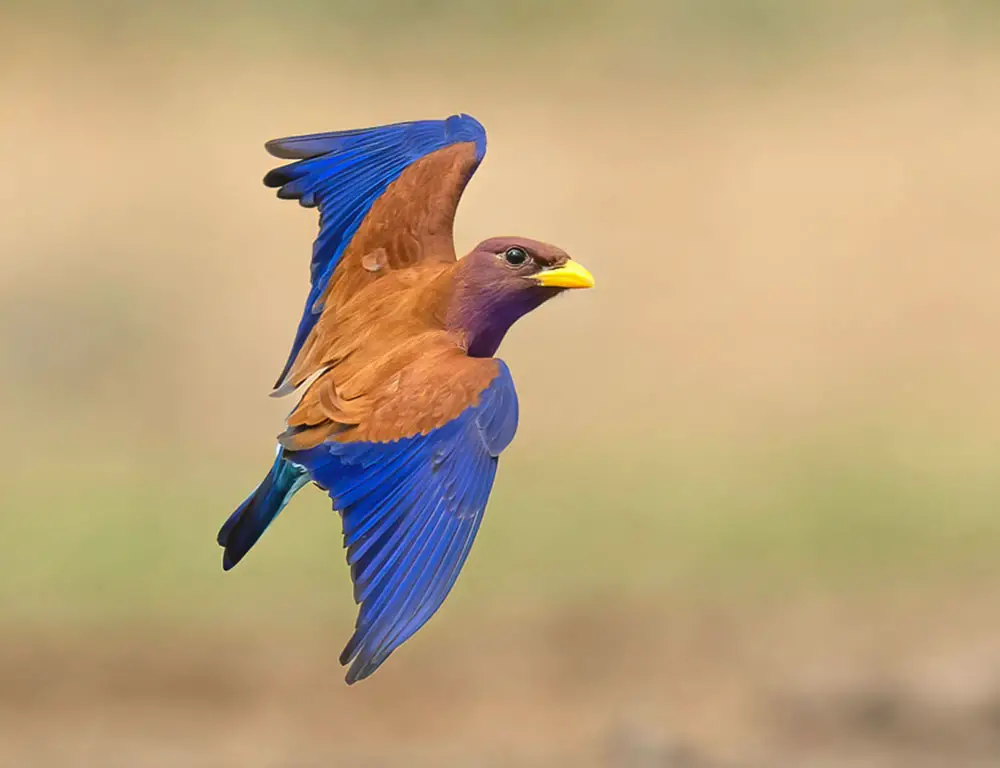
Physical Characteristics of Broad-Billed Roller
The Broad-Billed Roller (Eurystomus glaucurus) is a visually striking bird species with several distinctive physical characteristics that set it apart in the avian world:
Coloration
The most notable feature of the Broad-Billed Roller is its attractive plumage. It may appear predominantly blue from a distance, but an iridescent green sheen can be observed on its back and wings upon closer inspection.
The bird’s underparts are typically light blue, creating a stunning contrast against its darker upper body. Juveniles often have more subdued hues with brownish tones until they reach maturity.
Bill Shape
The Broad-Billed Roller possesses a broad, robust bill that stands out prominently against its colorful plumage. This bill is not merely for aesthetics but serves a functional purpose in catching prey mid-flight.
It is long, sturdy, and slightly curved downwards, aiding the bird’s ability to precisely snatch insects out of the air. Additionally, the bill often sports a charming yellow hue, adding another dimension to its vivid appearance.
Size and Shape
The Broad-Billed Roller is a medium-sized bird with a compact and streamlined body. It typically measures around 25 to 30 centimeters (10 to 12 inches) in length, with a wingspan of approximately 50 to 60 centimeters (20 to 24 inches).
The bird’s body is well-adapted for its acrobatic flight displays, featuring long, pointed wings and a relatively short tail.
Iridescent Feathers
One of the most captivating aspects of the Broad-Billed Roller’s appearance is the iridescence of its feathers. In certain lighting conditions, particularly when sunlight hits its plumage at certain angles, the bird emits a dazzling array of colors, enhancing its visual appeal.
Habitat and Distribution of the Broad-Billed Roller
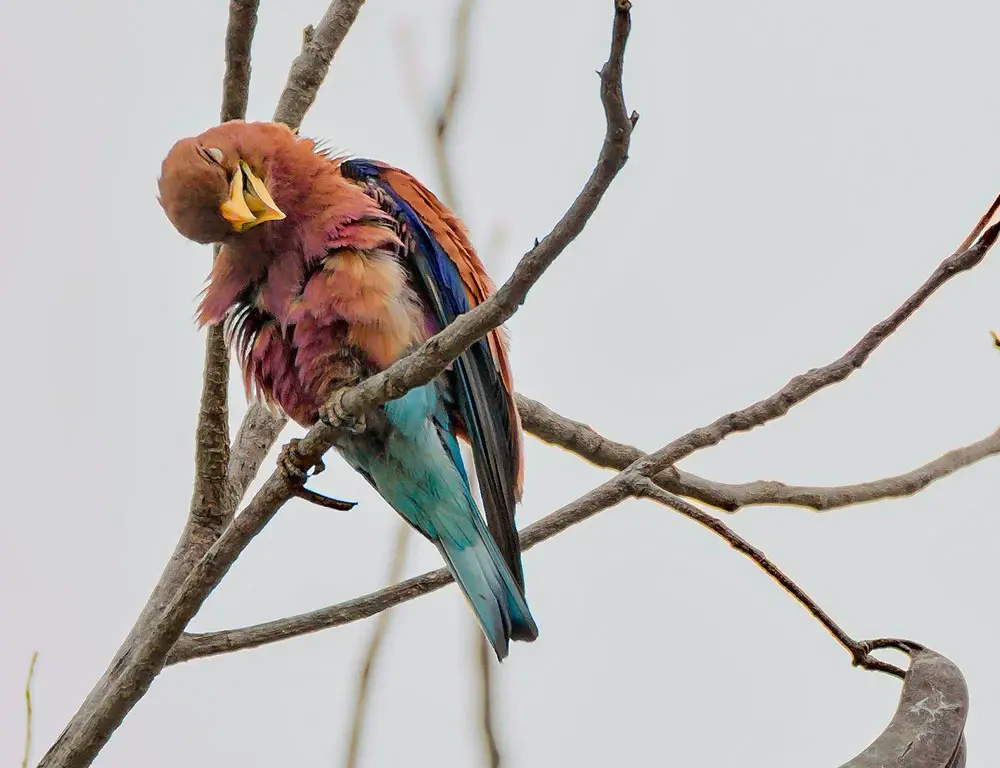
The Broad-Billed Roller (Eurystomus glaucurus) is a spectacular bird species with specific habitat preferences and a wide geographical distribution across sub-Saharan Africa.
Let’s delve deeper into its habitat and distribution:
Preferred Habitats
Broad-Billed Rollers thrive in warm climates and are commonly found in woodland areas that provide suitable conditions for nesting and hunting.
They particularly favor forests rich in mopane trees and miombo woodlands, which are prevalent in southern Africa.
These habitats offer a canopy cover necessary for nesting and provide an abundance of insects, constituting most of the Broad-Billed Roller’s diet.
Additionally, they prefer habitats near water bodies like rivers or lakes, as these areas serve as excellent hunting grounds for aquatic insects.
Geographical Range
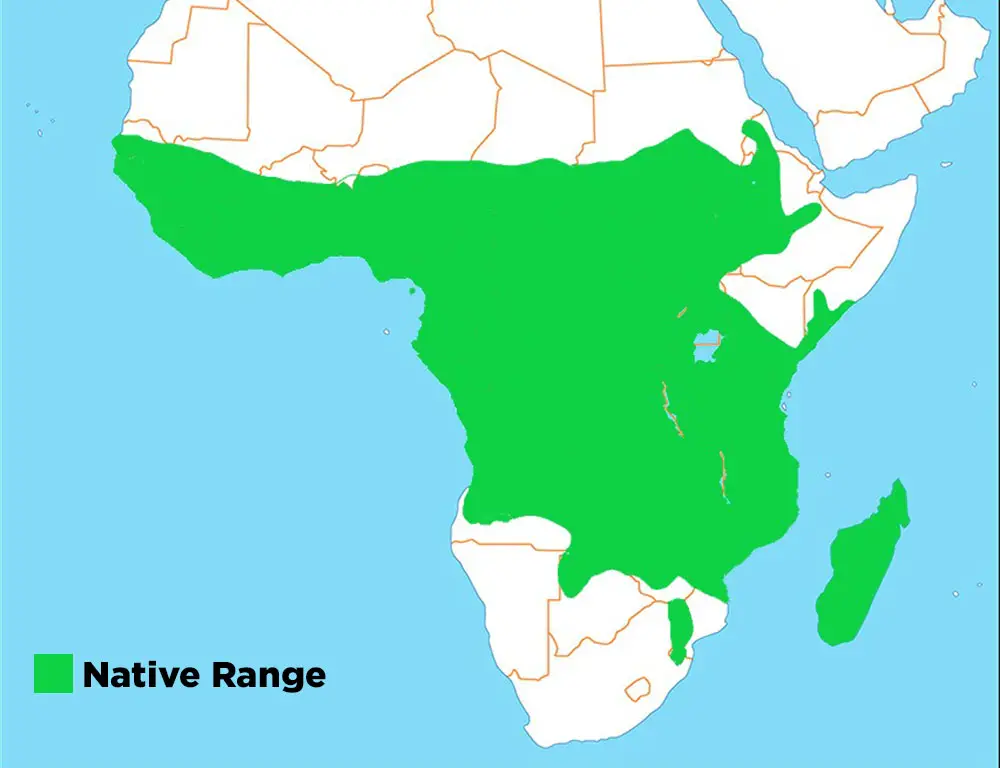
The Broad-Billed Roller is predominantly found in sub-Saharan Africa, with a distribution that spans from the west coast to the east coast of the continent. Its range extends from Senegal and Gambia on the west coast to Somalia on the east coast.
Most Broad-Billed Rollers reside in Southern Africa during the breeding season, with significant populations found in countries such as Zimbabwe, Botswana, Namibia, Angola, and South Africa.
However, during colder periods, they may migrate northwards towards Central Africa.
Migration Patterns
Broad-Billed Rollers exhibit seasonal movements within their range, particularly in response to changes in weather and food availability. During the breeding season, they concentrate on specific regions with suitable nesting sites and abundant prey.
Some populations may migrate northwards towards Central Africa to seek favorable habitats and resources as temperatures decrease. These migration patterns reflect the species’ adaptability and resourcefulness in responding to environmental changes.
Behavior and Feeding Habits of the Broad-Billed Roller
The Broad-Billed Roller (Eurystomus glaucurus) exhibits fascinating behavior and feeding habits, contributing to its ecological role and survival strategies.
Here’s an overview:
Breeding Behavior
Broad-Billed Rollers are monogamous birds, forming long-term pair bonds with one partner. Their breeding season often coincides with the rainy season in their habitats, as this period is associated with increased food availability.
Males engage in elaborate courtship displays, showcasing their agility through aerial maneuvers to attract females. Nesting occurs in cavities of tall trees or termite mounds on the ground, protecting from predators.
Both parents participate in incubating the eggs, typically laying 2-4 eggs per clutch.
Diet and Feeding Preferences
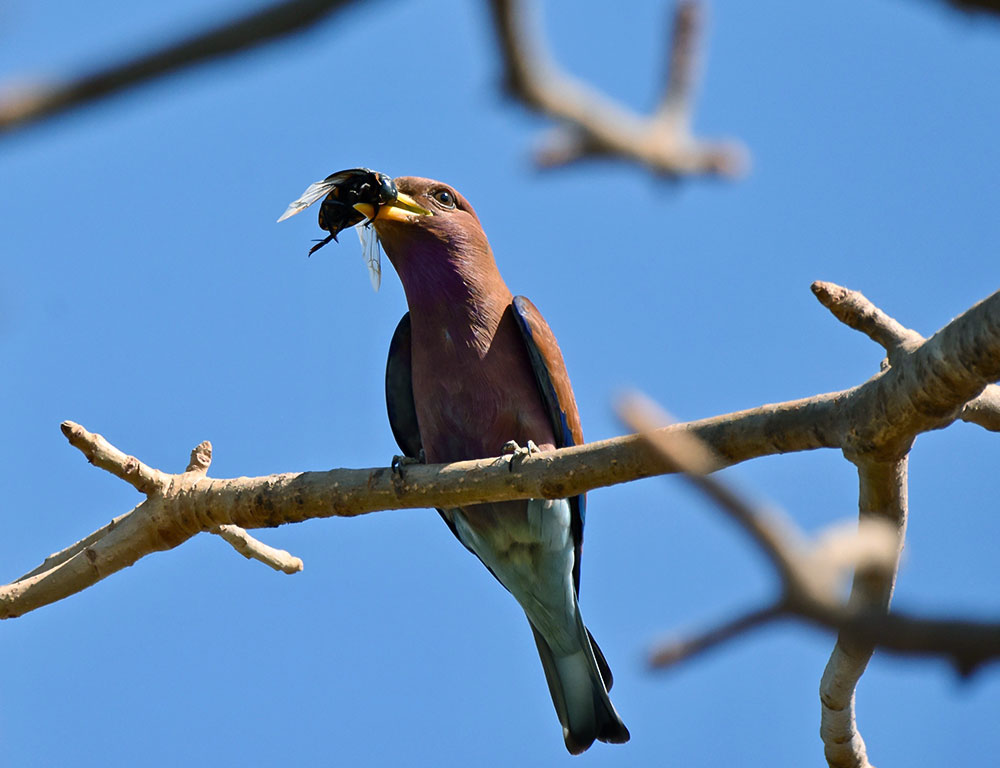
Broad-Billed Rollers are primarily insectivores, with insects forming a significant portion of their diet. They have a diverse palate, feeding on beetles, grasshoppers, spiders, centipedes, and small reptiles.
One notable feeding behavior exhibited by Broad-Billed Rollers is ‘hawking’, where they swoop down from perches to capture prey mid-flight with remarkable precision. This aerial feeding strategy allows them to target flying insects effectively.
Additionally, Broad-Billed Rollers have strong stomach acids, enabling them to digest the hard shells of beetles and other exoskeletons efficiently.
Territoriality and Defense
During the breeding season, Broad-Billed Rollers fiercely defend their nesting territories against intruders, exhibiting territorial behavior to protect their offspring and nesting sites.
They may engage in vocalizations and aggressive displays to deter potential threats, ensuring the safety and security of their breeding grounds.
Parental Care
Both male and female Broad-Billed Rollers incubate the eggs and raise the young. They cooperate in feeding and caring for the chicks until they are ready to fledge.
Parental care is crucial for the survival of the offspring, as it ensures their growth and development until they are independent enough to fend for themselves.
Conservation Status of the Broad-Billed Roller
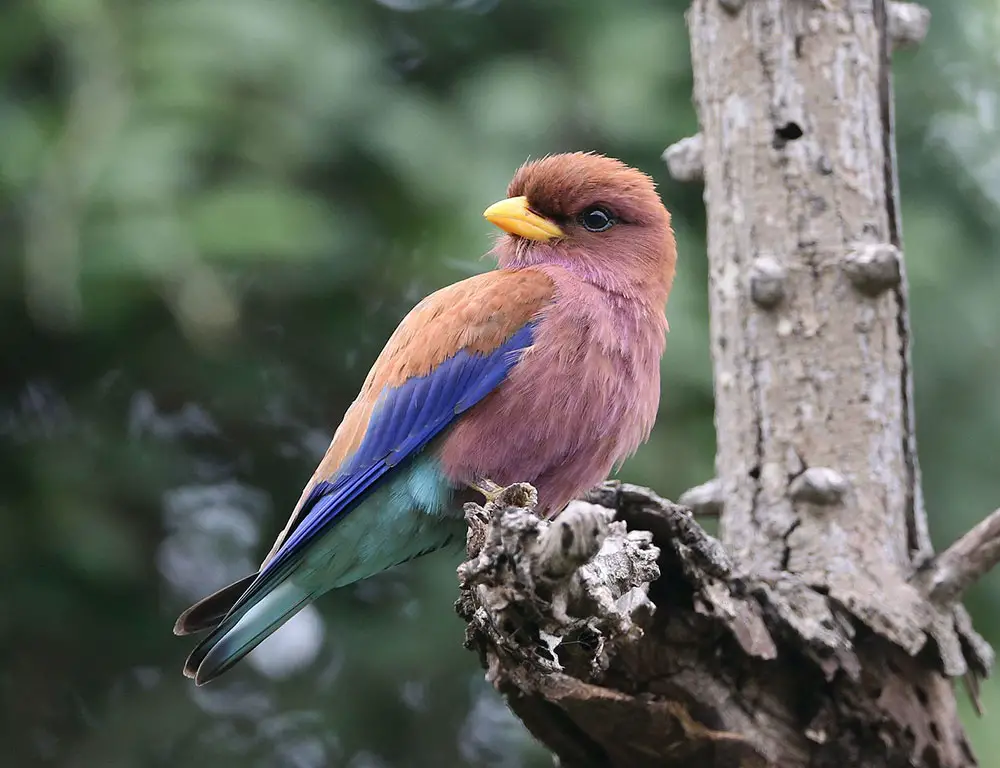
The Broad-Billed Roller (Eurystomus glaucurus) currently holds a favorable conservation status, classified as ‘Least Concern’ by the International Union for Conservation of Nature (IUCN) Red List of Threatened Species.
This designation indicates that the species is not facing imminent threats to its survival.
Threats and Concerns
While human activities do not directly target the Broad-Billed Roller, it faces potential threats indirectly due to habitat degradation caused by deforestation and agriculture expansion.
These activities lead to the loss of nesting sites, reduced food availability, and fragmentation of habitat, which can impact the species’ long-term viability.
Conservation Efforts
Conservation efforts are underway to mitigate these threats and safeguard the future of the Broad-Billed Roller. Initiatives focus on preserving woodland areas and raising awareness about maintaining healthy ecosystems for the species’ survival.
Protected areas and conservation programs aim to restore degraded habitats, mitigate human-wildlife conflicts, and promote sustainable land management practices.
Community Engagement
Engaging local communities in conservation efforts is crucial for protecting the Broad-Billed Roller and its habitat.
Community-based conservation projects involve stakeholders in habitat restoration, wildlife monitoring, and ecotourism initiatives, fostering stewardship and appreciation for the species among local populations.
Conclusion
The Broad-billed Roller stands as a captivating emblem of Africa’s avian diversity, enchanting observers with its vibrant plumage and graceful aerial displays.
Its broad, flat bill and adept flying skills make it a formidable hunter of insects, contributing to the delicate balance of its ecosystem.
Despite its striking appearance, the Broad-billed Roller faces threats from habitat loss and fragmentation, highlighting the importance of conservation efforts to safeguard its future.
By preserving the habitats upon which it depends and raising awareness about its ecological significance, we can ensure that future generations continue to marvel at the beauty and elegance of this magnificent bird.
As a symbol of resilience and adaptability, the Broad-billed Roller serves as a reminder of the wonders of the natural world and the urgent need to protect and cherish it for generations to come.